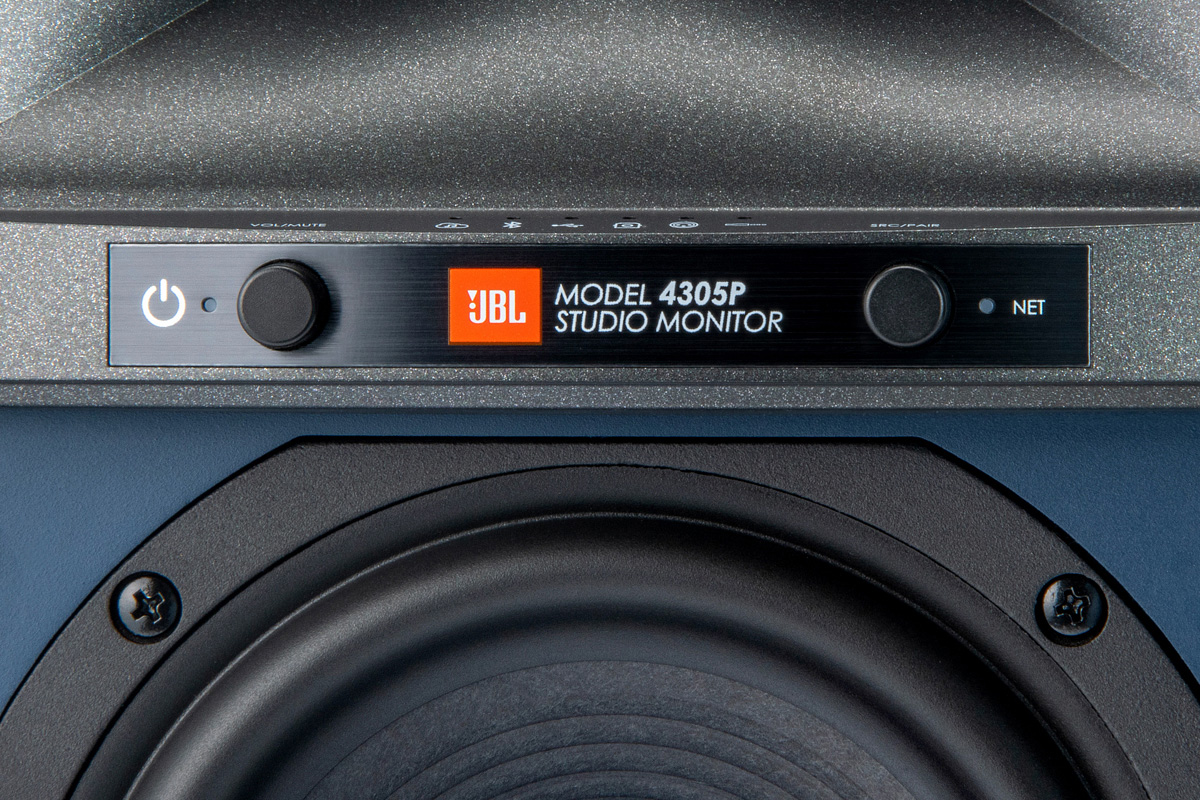Inspired by a SoundStage! Audiophile Podcast episode, I posed a rhetorical question in a Simplifi feature published a few months ago: “Is Component Hi-Fi Dead?” During that podcast episode, Brent Butterworth, senior editor of SoundStage! Solo, had asked if we really need amplifiers anymore, given the growing acceptance of powered and active speakers with built-in amplification. “Amps are never going to die,” Brent opined, “but are amps kind of dead?” Dennis Burger, senior editor of SoundStage! Access, replied: “I don’t know if they’re dead. I just think they are unnecessary.”
I’m tempted to one-up these guys: maybe it’s not just amps that are unnecessary. With the emergence of streaming as the main source of recorded music, do we even need source components? In the past few years, I’ve reviewed active speakers from Bang & Olufsen, Bowers & Wilkins, Dynaudio, KEF, Linn, and SVS that have built-in network streamers. I’ve also reviewed active speakers from Buchardt Audio, DALI, Q Acoustics, and System Audio, which work with wireless hubs that have built-in streamers. You can connect source components to any of these products—but you don’t have to. All of them are self-contained music systems. Plug them into the wall, connect them to your home network, and you’re ready to play music.
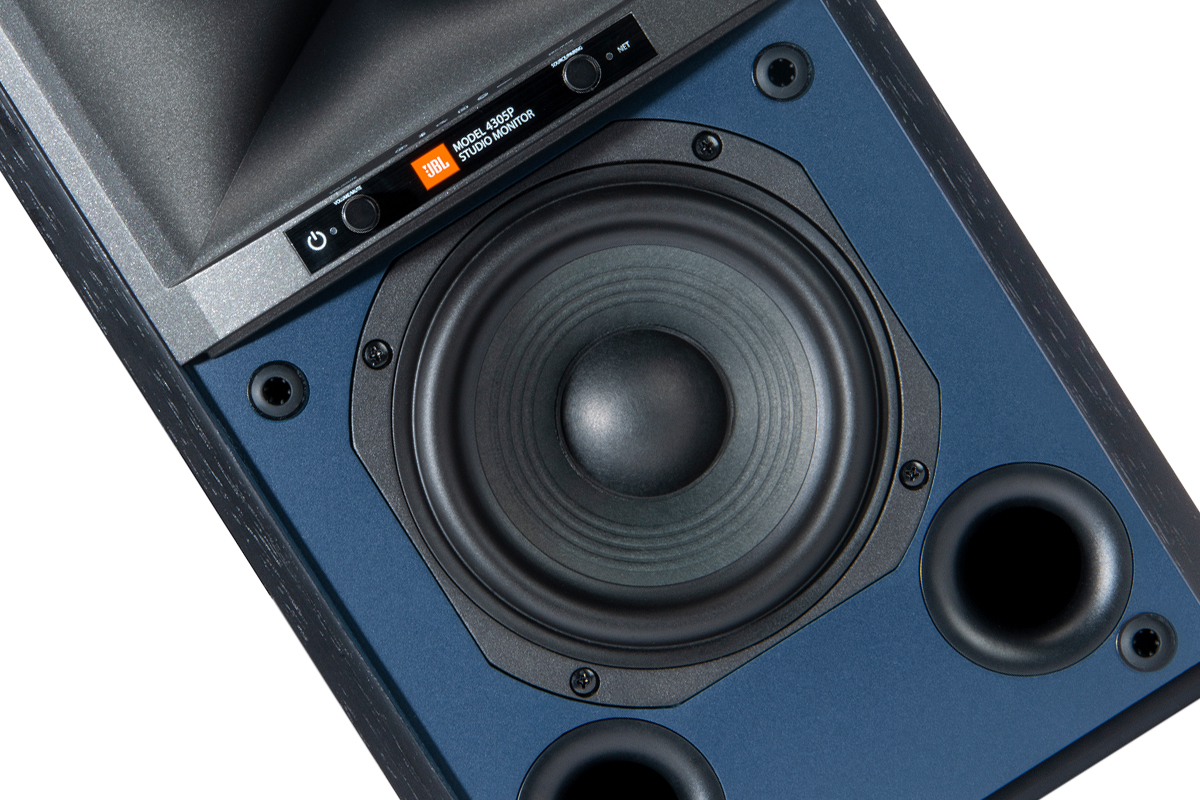
You can add one more brand to that list: JBL. Priced at $2200 (all prices in USD), JBL’s 4305P active speaker system has a built-in network streamer that supports Apple AirPlay 2, Google Chromecast, and Spotify Connect. It also has line-level analog, optical S/PDIF, and USB inputs.
Inside and out
The 4305P is sold as a stereo pair consisting of a primary and secondary speaker. Each speaker contains a 5.25″ paper-cone midrange-woofer powered by a 125W class-D amp and 1″ compression-driver tweeter powered by a 25W class-D amp. The midrange-woofer is crossed over to the tweeter using DSP at 1.75kHz.
The primary speaker contains all the input and output connectors and the network circuitry. It sends digital audio to the secondary speaker at up to 24-bit/192kHz resolution over a wired connection, or up to 24/96 wirelessly. The two speakers are paired with each other at the factory. Each speaker measures 13.2″H × 8.3″W × 8.8″D including grille; the primary speaker weighs 15 pounds, and the secondary speaker weighs 14.1 pounds.
The pebble-finished tweeter horn that occupies the top third of the front baffle gives the 4305P a funky, nostalgic look, ideal for casual environments like dens and home offices. The 0.75″ MDF enclosures are covered with walnut veneer. Buyers can choose between Natural Walnut and Black Walnut finishes. My review sample had the Black Walnut finish, which I found a bit subdued. At the Toronto Audiofest in October, I saw a 4305P system with the Natural Walnut finish, which I found warmer-toned and more attractive.
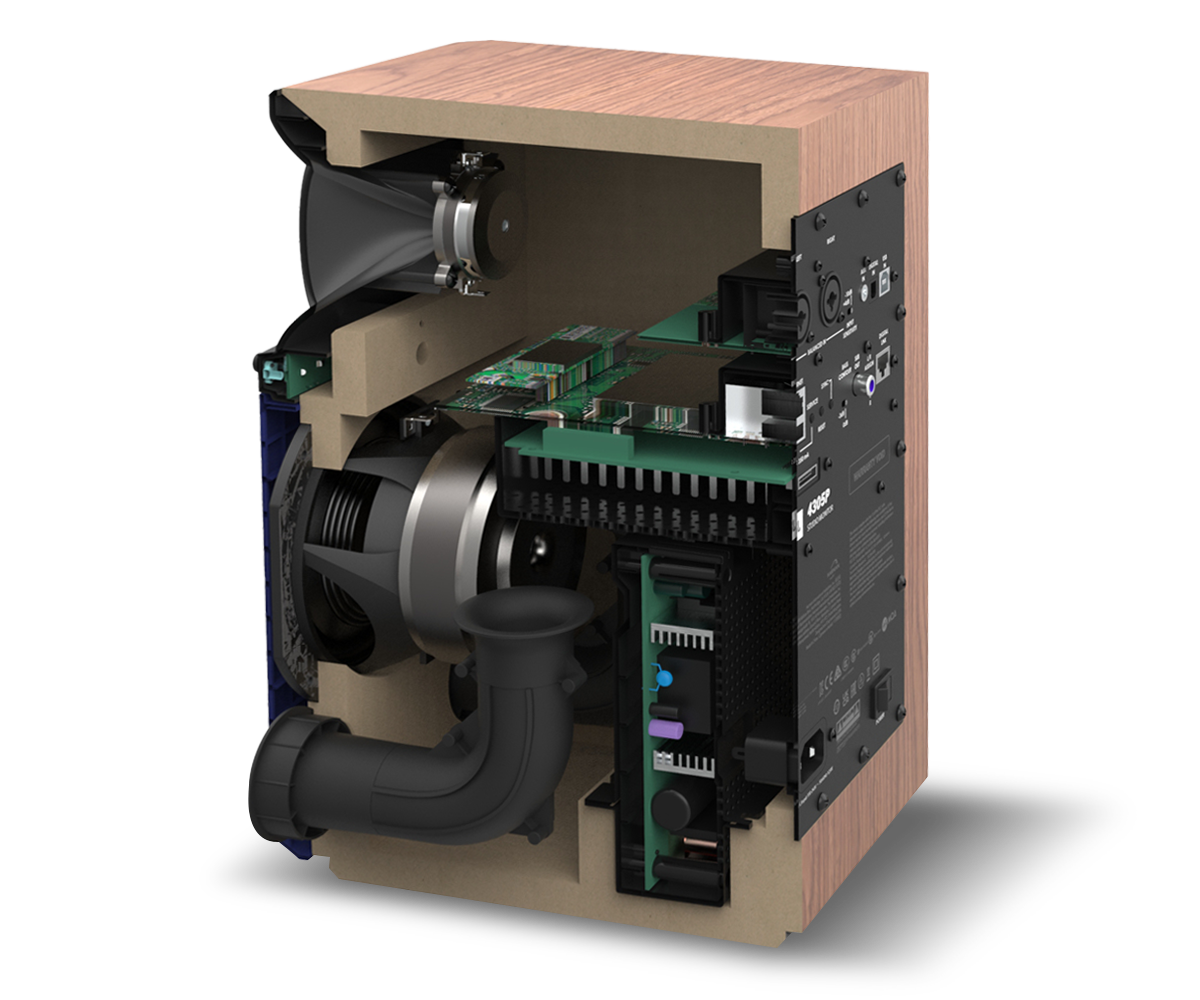
At the bottom of the horn is a strip that carries the JBL logo and model name. On the primary speaker, there are small control knobs on either side of that strip, and small LEDs above it that glow to indicate the selected source. Press the knob on the left to power the speakers on and off; rotate it to adjust volume. Press the knob on the right to initiate Bluetooth pairing; rotate it to cycle through sources.
The bottom two-thirds of the front baffle is covered with a removable grille—dark blue on the Natural Walnut version, black on the Black Walnut. Behind that grille is the 5.25″ midrange-woofer, and below it are two bass ports.
At the bottom of the back panel on both speakers are a two-prong IEC power inlet and master on/off switch. The primary speaker has a pair of balanced line-level inputs (XLR and ¼″ combo) with a switch that sets the sensitivity—the options are -10dB and +4dB. Next is a 3.5mm stereo mini analog input, a USB Type-B port for connecting a computer, and an optical S/PDIF (TosLink) input. Below these is an ethernet port for connecting the system to your home network, as well as a USB Type-A port for service. Alongside are two small buttons, one for performing a factory reset, the other for synching the primary and secondary speakers wirelessly. Further to the right is a Bass Contour switch with 0dB and -3dB positions; the -3dB setting can be used if the speakers are placed close to walls or corners. Next is a subwoofer output jack (RCA); when a sub is connected, an 80Hz high-pass filter for the main speakers is automatically engaged. Then there’s a little switch that lets you specify whether the primary speaker handles the left or right channel. (All powered and active speakers should give you this option; inexplicably, many do not.) On the far right is another ethernet port labeled Digital Link—this is used for a wired connection between the primary and secondary speaker. There’s a corresponding port on the secondary speaker, along with a Sync button for pairing the speakers wirelessly.
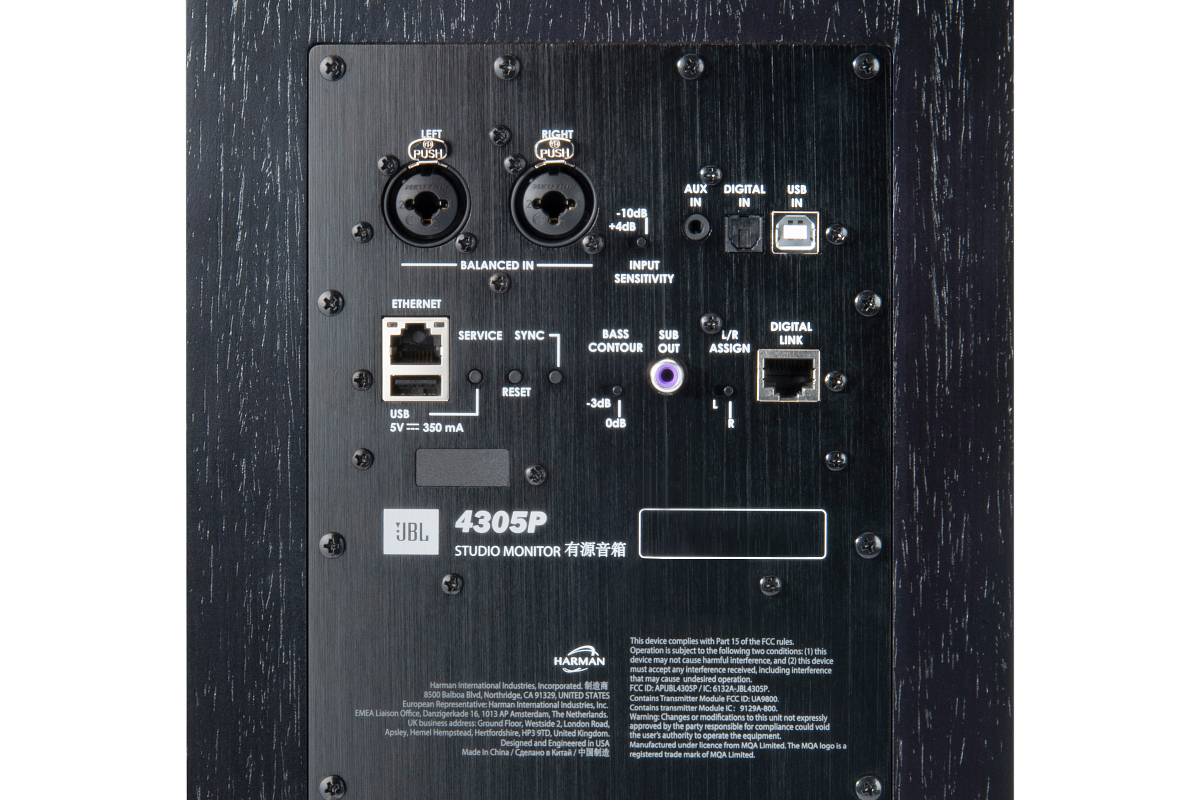
As noted, the 4305P has Bluetooth and Wi-Fi connectivity, and supports Apple AirPlay 2, Google Chromecast, and Spotify Connect. Maximum resolution is 24/192 via ethernet, Wi-Fi, S/PDIF, and USB. The 4305P also has MQA decoding and rendering capability for hi-rez playback from Tidal.
The 4305P ships with a gray plastic Bluetooth remote with buttons for selecting inputs, turning the system on and off, adjusting volume, muting and unmuting, pausing and resuming playback, and skipping tracks forward and backward.
Setup and software
The 4305P comes with a clearly written 11-page manual that covers setup and day-to-day use. If you’re using a hardwired connection, just run a network cable from the primary speaker’s ethernet port to your router or access point.
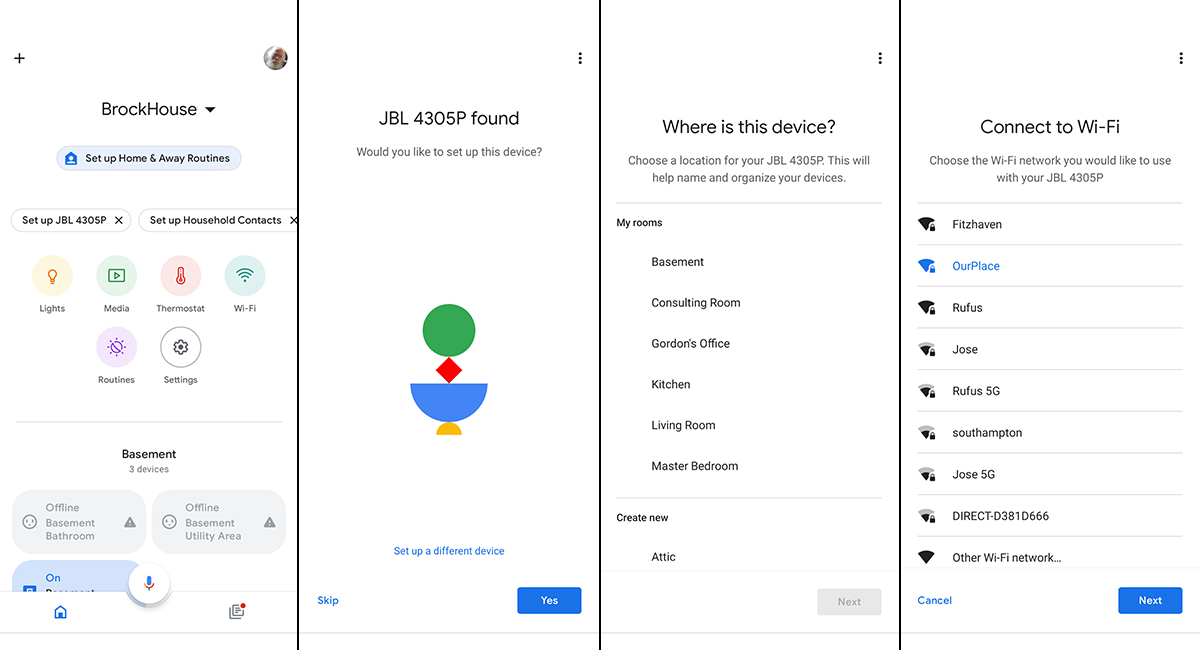
You can connect the system to your Wi-Fi network with the Google Home App on an Android or iOS device. I launched the app on my Google Pixel 4a 5G phone—near the top of the home screen was a button inviting me to set up the JBL 4305P. I selected it, and the app confirmed that it had found the speakers, then asked if I had heard a sound it played through the speakers (I had) and the name of the room where the speakers were being used (I chose Living Room). Next, I confirmed the name of my Wi-Fi network, and that Google Home should use the saved password for that network. Google Home linked the speakers to my Google account, offered to run a tutorial on using Chromecast (I didn’t need it), and I was done. Pretty familiar and completely smooth.
Apple users can also connect the 4305P to a Wi-Fi network by opening their device’s Network Settings menu and following the instructions for setting up the 4305P as an AirPlay speaker.
Listening
For my first round of listening, I placed the JBL speakers on 28″ sand-filled MDF speaker stands on either side of the electric fireplace in our living room. The speakers were 7′ apart and 7.5′ from my listening position on the end cushion of our sectional sofa on the opposite wall. The rear panels of the speakers were 16″ from the wall behind them, so I left the Bass Contour switch in the default (0dB) position.
I did all my listening with the primary and secondary speakers paired wirelessly, and did not experience any blips or dropouts. For some of my listening, I connected my HP Spectre x360 notebook PC to the primary speaker’s USB port and played music using Audirvana 3.5.51. I also used Chromecast to send music to the 4305P from the Qobuz app on my Pixel smartphone, and AirPlay to stream music from my iPhone 8. For most of my listening, I streamed music to the speakers from Roon via Chromecast.
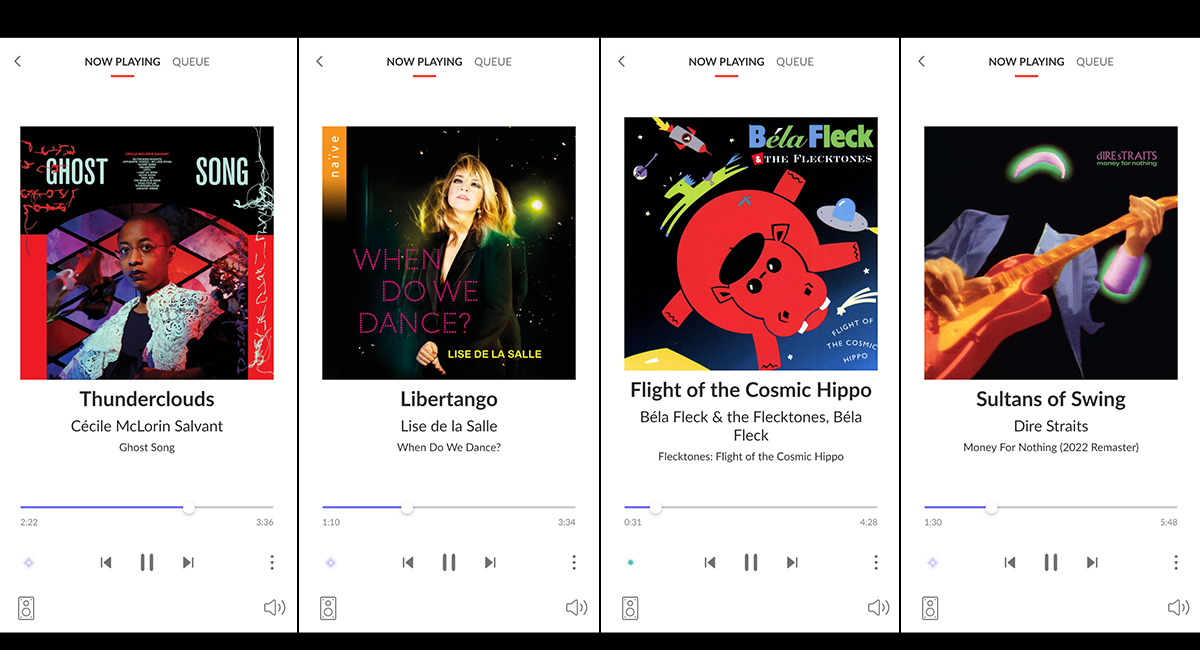
Something that impressed me right away was how natural voices sounded through these speakers. Playing “Thunderclouds” from Cécile McLorin Salvant’s wonderful album Ghost Song (24/96 FLAC, Nonesuch / Qobuz), it was like the singer was in the room with me. Salvant’s gentle soprano voice sounded completely natural through its entire range—there was no hint of coloration, and no edginess when she hit high notes in the choruses. Consonants were clear, but not the least bit hot or spitty. Her voice, coming from the center of the soundstage, slightly above and behind the speaker plane, sounded three-dimensional and embodied.
The instrumental accompaniment was just as impressive. Keita Ogawa’s beats on the bongo drum in the center rear had excellent pop, followed by a short resonance of the drum body. A little to the right, the action of the brushes against the snare drum had loads of texture but were not overlit. The JBL speakers made it easy to admire the subtle phrasing on Marvin Sewell’s overdubbed electric-guitar tracks on the far left and right of the soundstage, right at the front. I could picture the exact amount of pressure he was giving each note and chord. The JBLs were just as convincing with Sullivan Fortner’s gentle, legato piano phrasing in the introduction and his skipping style in the middle of the song. Piano tone was natural from top to bottom.
Burniss Earl Travis’s double bass, a little behind and to the right of the singer, sounded full and robust, with a perfect combination of snap and rich, woody resonance. Notes played on the bottom string were just a tad boomy, but I can’t fault the speakers for that. My living room has a nasty standing wave around 62Hz, and it’s more pronounced in the right channel. So that boominess was caused by the room, not the JBL speakers. I briefly tried setting the Bass Contour switch in the -3dB position, but that made notes on the middle and upper strings sound too lean, so I reverted to the 0dB setting.
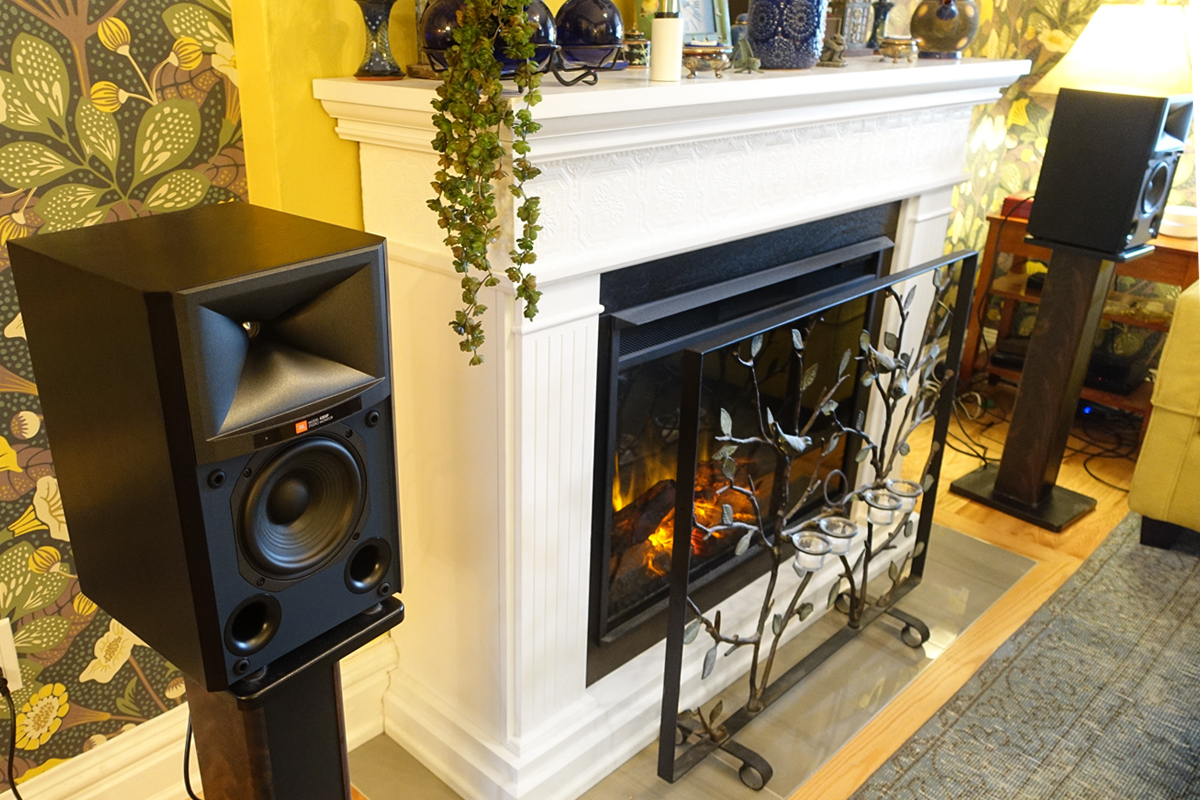
French pianist Lise de la Salle’s When Do We Dance? (24/96 FLAC, Naïve / Qobuz), featuring pieces by a wide range of composers including George Gershwin, Fats Waller, Maurice Ravel, and Béla Bartók, is one of the best recordings of solo piano I have ever heard. Through the 4305P, William Bolcom’s “Graceful Ghost Rag” sounded delectable. The piano tone was close to ideal throughout this nostalgic, sedate number. Chords and phrases in the higher octaves had lovely clarity, and no clang whatsoever, and de la Salle’s left-hand phrases in the lower octaves had satisfying heft. On this piece, the JBL system showed its microdynamic capabilities, beautifully conveying de la Salle’s creatively varied touch and pedaling. I also loved the way the JBL speakers rendered the decay of the piano into Berlin’s legendary Teldex Studio where this great recording was made.
“Libertango,” by the Argentinian composer Astor Piazzolla, revealed the dynamic limitations of this compact system. The piece begins with de la Salle drumming quietly on the piano body, and this was utterly convincing—fast and woody. That’s followed by a sharp left-hand ostinato phrase accompanying quiet legato chords in the middle octaves. Forty seconds in, de la Salle begins the main theme, an intense tango full of passion and longing. These sections too sounded glorious. As with the Bolcom rag, piano tone was wonderful, and the JBLs displayed de la Salle’s technique beautifully. But as the piece builds in intensity, loud chords and notes in the higher octaves became a little strident. Let’s keep this in perspective—this is a very demanding recording, with huge dynamic range. Considering the speaker sizes and specs, what this active standmount system did with this recording was amazing.
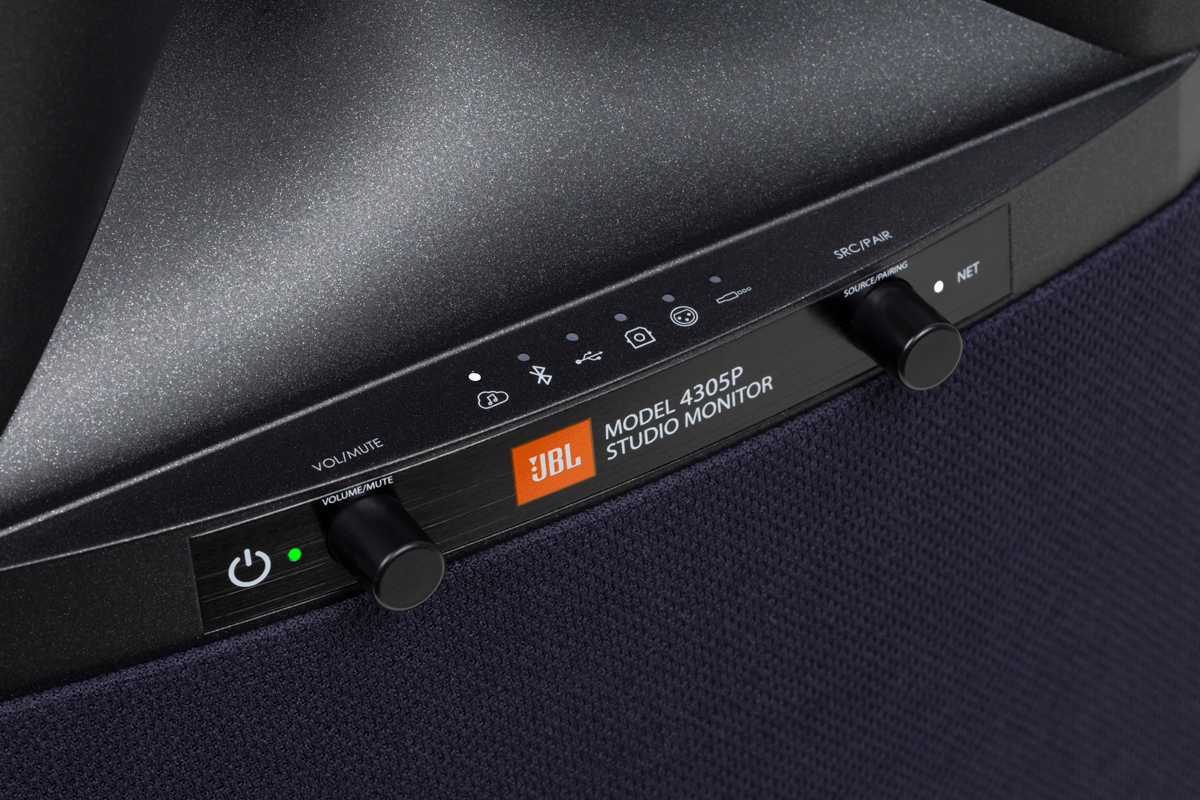
One of my favorite selections for assessing low-frequency performance is the title track of Flight of the Cosmic Hippo, by Béla Fleck and the Flecktones (16/44.1 FLAC, Warner Records / Qobuz). On this album, Victor Lemonte Wooten plays a fretless five-string electric bass guitar whose lowest string is tuned to B0—about 31Hz, 10Hz lower than the lowest note (E1) on a four-string bass.
Played on the middle and upper strings, the first verse of Wooten’s bass solo in the middle of the track sounded powerful and well controlled; but the JBL system lost a little gas when he descended to the lowest string in the second verse. Roy “Future Man” Wooten’s synthesized kick drum had a really nice impact, but was not quite as hard-hitting as I’d have liked. When Fleck pulled and released a string on his banjo, the 4305P responded with a big, effortless transient followed by the twangy decay of the instrument’s resonator.
I wanted to hear whether adding a subwoofer would improve the JBL’s rendition of Wooten’s five-string bass, so I connected my SVS 3000 Micro ($899.99) to the primary speaker’s subwoofer output. One of the things I appreciate about this little sub is the ability to implement parametric EQ filters using the SVS app. With the sub in the mix, the low notes in the bass solo now filled my listening room effortlessly. And thanks to the EQ filters I had implemented to counteract the standing waves in my listening space, bass definition and tonal differentiation were both improved. I could hear Wooten plucking the strings on his instrument more clearly. With the sub doing all the heavy lifting in the bass region, thanks to the 4305P’s high-pass filter, the presentation opened up slightly. The soundstage became a little deeper and there was more space around the instruments.
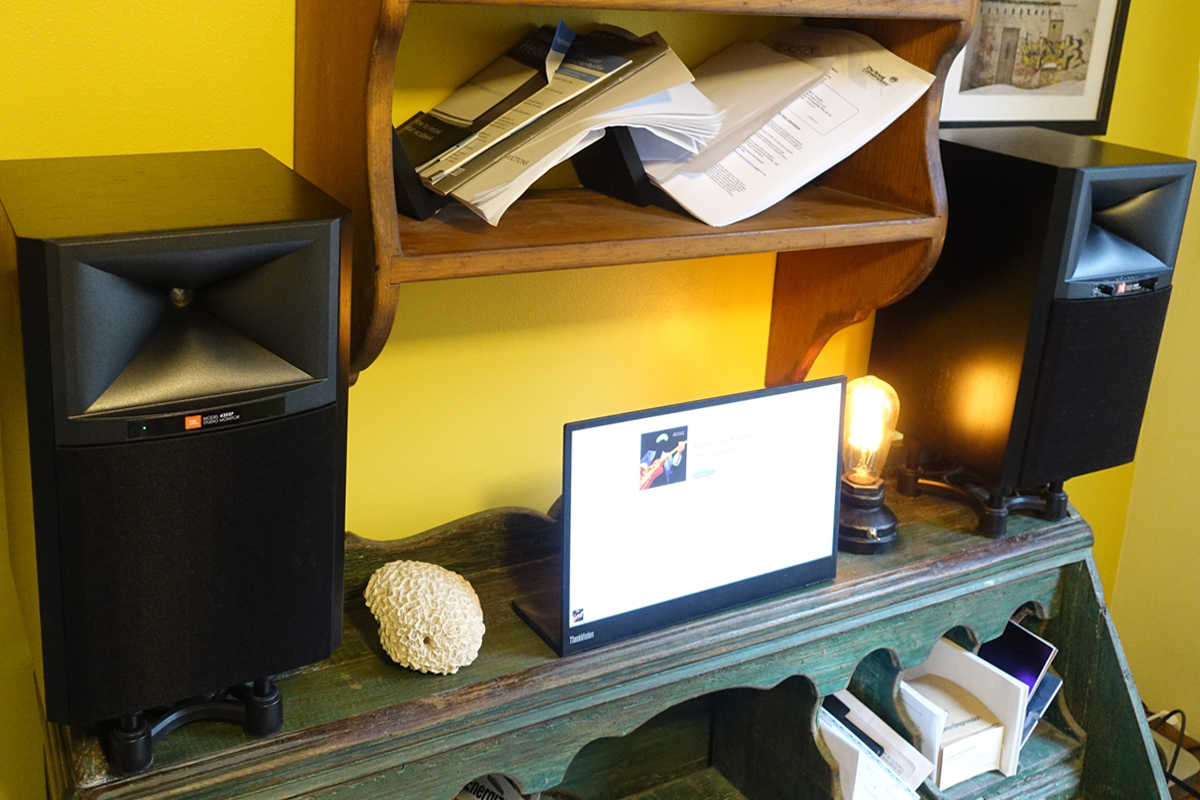
Given the fact that JBL bills the 4305P system as “studio monitors,” I wanted to hear how the system would fare in a nearfield setup. So I trundled the speakers up to my second-floor home office and placed them on IsoAcoustics ISO-130 desktop stands on the top shelf of my secretary desk. Because of the height of my desk, the tweeters were a little above ear level, but I arranged the spacers in the IsoAcoustics stands to tilt the speakers downward so my ears were only 10° vertically off-axis. The speakers were 3′ apart and 3.5′ from my listening position when I leaned back in my office chair; their back panels were 4″ from the wall behind them. Given the proximity to the wall, I set the Bass Contour switch to -3dB.
Even with the low-frequency cut, there were some recordings where bass was too prominent. I was wrapping up this review in late November, so I decided to get in the holiday spirit; I played Jordi Savall’s 2019 live recording of J.S. Bach’s Christmas Oratorio with the Le Concert des Nations and La Capella Reial de Catalunya (24/88.2 FLAC, Alia Vox / Qobuz). The work opens with a big timpani flourish, which recurs throughout the first movement. In the highly reverberant acoustics of Barcelona’s Palau de la Música Catalana, the vigorous timpani thwacks overwhelmed the mix—which was a pity, because I enjoyed everything else about the way the JBL speakers rendered this piece.
However, with most recordings, the tonal balance was just fine. For example, on “Sultans of Swing,” from the 2022 remastered version of Dire Straits’ Money for Nothing (24/192 FLAC, Rhino-Warner Records / Qobuz), Jon Illsley’s electric bass guitar in the right rear of the soundstage and Pick Withers’s kick drum and floor tom in the center rear just pounded, giving this song infectious momentum. But neither instrument sounded boomy or bloated.
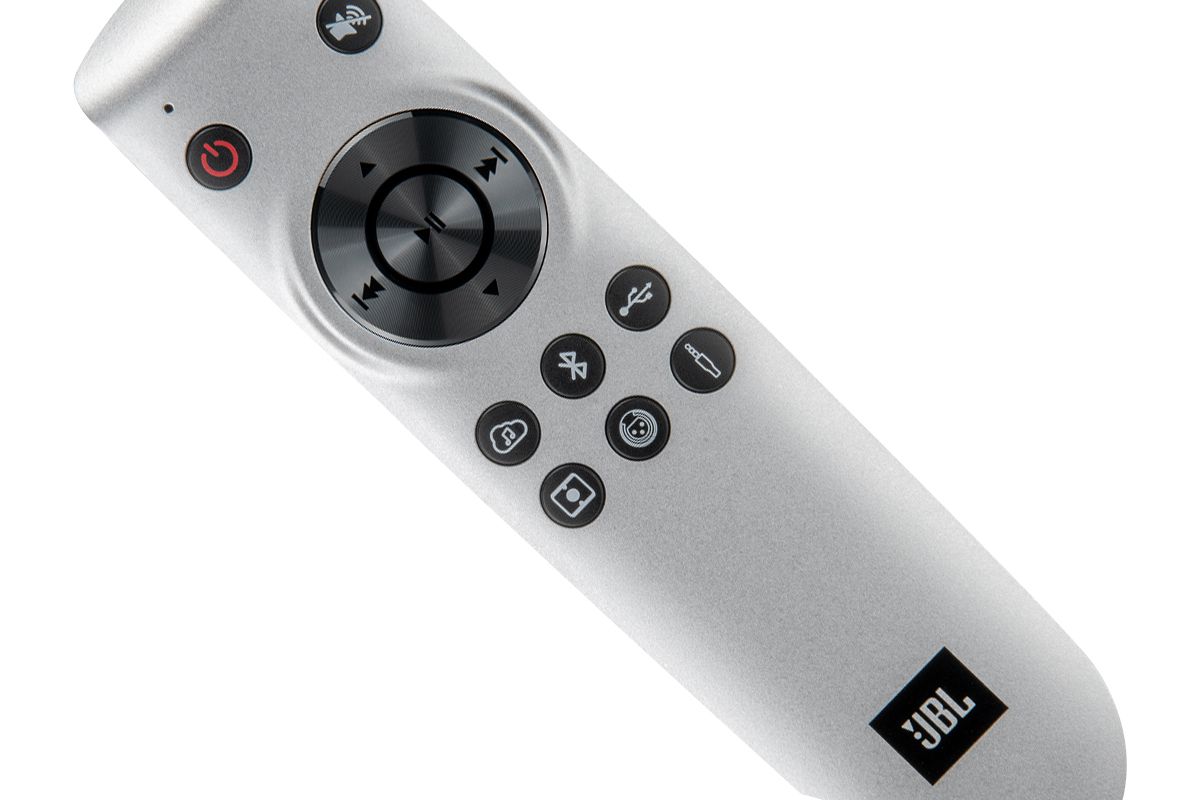
The JBL’s performance higher in the audioband was just as satisfying. A little to the left of center, Mark Knopfler’s Stratocaster guitar had wonderful jangle. The JBL system articulated his legendary solo beautifully. The leading edges of every note and chord were ideally fast, but not etched. And Knopfler’s voice in the center sounded completely natural. His Dylanesque drawl never sounded nasal or chesty.
Comparison
I compared the JBL 4305P with Q Acoustics’ Q Active 200 active loudspeaker system ($2099) in my living room and home office. The Q Active 200 has an unusual driver complement: two front-firing 2.25″ balanced mode radiator (BMR) drivers, each powered by a 20W class-D amp, and a rear-firing 4.5″ woofer powered by a 45W class-D amp. On the back of each speaker is a room-boundary compensation switch with settings for placing the speaker near a corner, near a wall, or in the open.
For my living-room audition, I set the switches on both Q Active speakers to the open position, and oriented them so the BMR drivers were on the inside edges of the enclosures.
On “Thunderclouds,” the Q’s portrayal of McLorin Salvant’s voice was just as convincing as it was through the JBL system. Consonants were a tad more pronounced, so that I could more easily visualize how she was forming words. Aural images of the singer and instruments were more differentiated through the Q Active. But the images were more embodied with the JBL—with the Q they were more two-dimensional. The soundstage was wider through the Q Active 200, extending well beyond the outer boundaries of the system’s two speakers. But with the room-boundary switches in the open position, the lowest notes of Travis’s double bass sounded boomier than they did with the JBL system, while notes on the upper strings were leaner. Overall, the Q Active 200 sounded a little more incisive, but the 4305P sounded a little warmer and more inviting. I had no clear preference on this track—both systems sounded wonderful.
On de la Salle’s performance of Piazzolla’s “Libertango,” the Q Active 200 emphasized the leading edge of her notes a little more, so that they sounded a bit more spotlit. Piano tone was a little clangier through the Q, and the lowest notes had less authority. The Q system created a wider and deeper soundstage. The big conclusion of the performance was a little less strident through the Q, but more dynamically compressed. The JBL system more convincingly portrayed the massive power of de la Salle’s concert grand piano.
Up in my home office, I set the boundary EQ switches on the Q Active speakers to the corner position, as I have found the system sounds best this way atop my secretary. I oriented the speakers so that the BMR drivers were on the outside edges of the enclosures.
On “Sultans of Swing,” Illsley’s electric bass guitar and Withers’s kick drum sounded a little deeper and more powerful through the JBL system, but were crisper through the Q Active setup. Knopfler’s Stratocaster guitar sounded a little edgier through the Q, and his voice was leaner. The Q Active and the JBL gave slightly different renderings of this great song, and I enjoyed them both equally.
On Savall’s performance of Bach’s Christmas Oratorio, the big timpani thwacks were still too prominent through the Q Active, but they were more articulate. Instead of an indistinct boom, I was aware of the mallets hitting the drumheads, and the drumbeats reverberating through the Barcelona concert hall. I suspect this was because the Q Active system’s room-boundary settings meant the speakers were attenuating low frequencies more than the JBL system had.
Conclusion
I have a couple of minor reservations about the JBL 4305P system. Its pro-inspired styling will suit casual environments but will look out of place in more formal settings. And it would be nice if JBL provided more options for room-boundary compensation than just a two-position 0/-3dB switch. Otherwise, I have nothing but positives to say about this compact system.
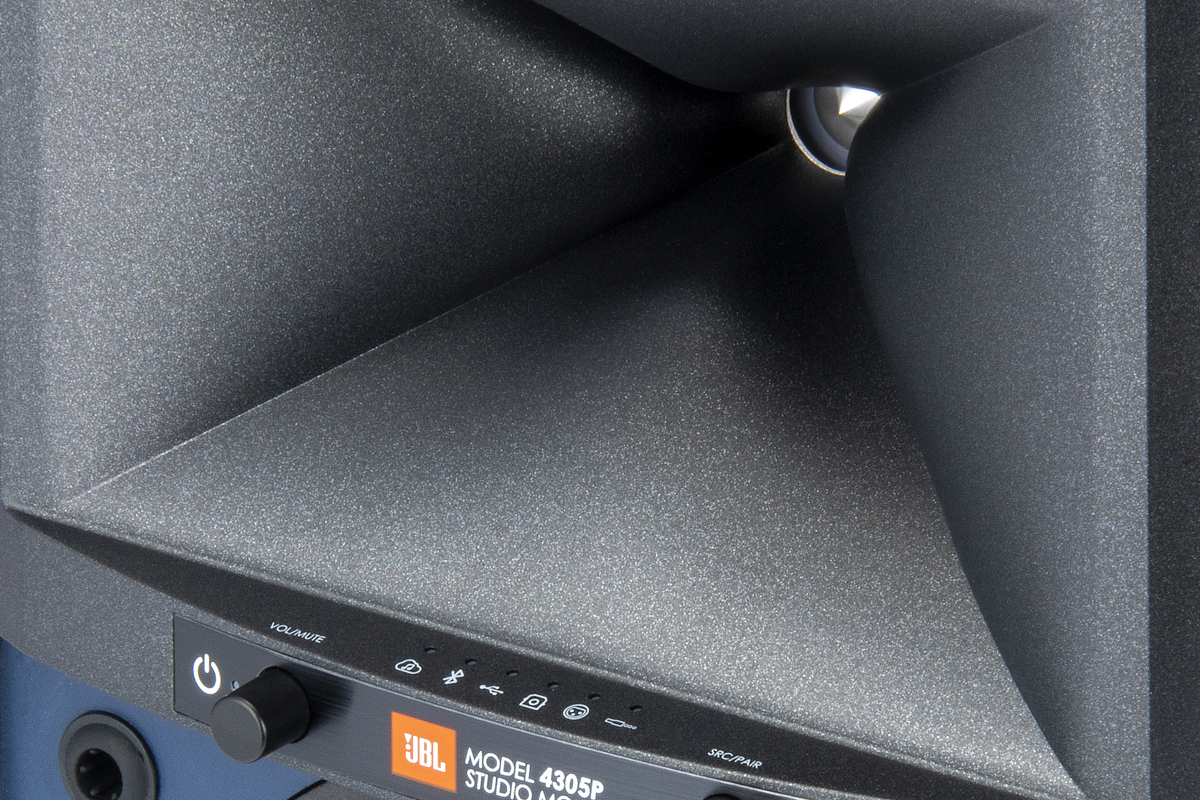
What about those tongue-in-cheek questions I asked at the beginning of this review? Are amplifiers and source components “unnecessary”? Quite possibly, judging from my experience with the JBL 4305P active speaker system. If you want to connect external components to the 4305P, you can—but you don’t have to. You can stream directly to the speakers from Spotify, any Cast-enabled app, or any audio app on an i-device.
At $2200, the JBL 4305P is fantastic value. For that price, you’d be hard-pressed to match the 4305P’s performance with a component system comprising a streaming integrated amp and a pair of passive speakers. Its sonic virtues include bold dynamics and commendable timbral accuracy, which was especially noticeable with voices. Highly recommended.
. . . Gordon Brockhouse
Associated Equipment
- Active loudspeakers: Q Acoustics Q Active 200.
- Subwoofer: SVS 3000 Micro.
- Speaker stands: BQKOZFIN (28″, floor), IsoAcoustics ISO-130 (desktop).
- Sources and control devices: Apple Mac Mini (M1, 2020) running Roon Core 2.0, HP Spectre x360 running Roon 2.0 and Audirvana 3.5.51, Google Pixel 4a 5G smartphone, Apple iPhone 8.
- Network: Google Wifi four-node mesh network.
JBL 4305P Active Loudspeaker System
Price: $2200 per system.
Warranty: Five years, parts and labor.
JBL
Harman International Industries Inc.
8500 Balboa Boulevard
Northridge, CA 91329
Phone: (800) 336-4525
Website: www.jbl.com
